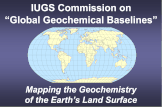Excursions
|
We offer three pre- and post congress excursions. The excursions can be booked with the registration
05.09.2019 - 06.09.2019
GEOPARK HARZ The excursion will include visit to the Geo Park Harz, and a visit to the world heritage side Rammelsberg. Regional geology and geology of mineral deposits will be in the focus of the excursion. A more detailed program is to come up The excursion is organized by the BGR; for more information contact Simon Goldmann at the BGR [email protected] Maximum number of participants: 20 The excursion will start from Goslar the 5th of September at 08:00. Participants have to organize their travel to Goslar by themselves. Accommodation and local transports are free. 13.09.2019
LUSATIAN LIGNITE MINING DISTRICT Maximum participants: 14 Costs: 15 Euro including train ticket, local transport with mini vans and lunch box. Meeting at 08:15 at Berlin Zooglischer Garten Train Station on track direction Cottbus Departure will be from Berlin Zoologischer Garten Train Station at 08:30 Program Information can be downloaded here: Contact: Dr. Werner Gerwin BTU Cottbus-Senftenberg [email protected] This excursion leads into one of the main lignite mining districts of Germany. A large number of former and still active lignite open-cast mines exist in this region of Lusatia (State of Brandenburg). During the excursion we will have a look into the active coal production and related environmental issues with regard to reclamation of mining landscapes. The active mine processes will become visible from a viewpoint at the open-cast mine Welzow-Süd. Different reclaimed areas will be visited afterwards illustrating potentials and problems of post-mining landscapes. The excursion ends at one of the mining lakes at Großräschen giving an outlook into the possible future development of this mining region 14.09.2019 – 18.09.2019
CONSTRUCTION AND DESTRUCTION OF A MOUNTAIN RANGE: THE BOHEMIAN MASSIF ( Excursion cancelled!) Date: 14th - 18th September 2019 Max number of participants: 16 Registration Deadline: 1st of July 2019 Costs: 225 € per participant (including transport, bed in dormitory and breakfast during the fieldtrip, lunch and dinner must be paid individually); Detailed Program Description to download here: Contact: Johannes Rembe [email protected] The aim of the excursion is to look at endogene and exogene processes that are linked to the rise and destruction of mountain ranges. We will discuss ideas and concepts that have been presented during the session “How to construct and destruct a mountain range” in the field. We will compare our findings in the field with the accepted concepts of uplift rates, cooling, erosion and exhumation and try to find new ways to upcoming questions. Starting with the high-grade metamorphic units of the Erzgebirge (Ore Mountains), we will travel to the southeast through different metamorphic nappes to reach the ancient foreland basin close to the city of Brno. During the endogene part of the excursion we will visit the deeply eroded Variscan Orogen. The focus will be on the exhumation mechanisms of deeply subducted metamorphic units, comprising Coesite and Diamond bearing UHP rocks in the Erzgebirge. In the central Czech Republic, we will have a look at outcrops of the metamorphic lower- to mid-crustal units of the Moldanubian Domain, which are supposed to represent an orogenic root. The outcrops of the Moravosilesian Nappe System will lead us into mid-crustal levels. Changes in rheology and mineralogy from lower to upper crust indicate the ongoing retrograde metamorphism during exhumation. The second part of the field trip focuses on the sedimentary basin fill of the eastern foreland basin looking at exogene processes. The coarse grained clastics of the sedimentary filling in the „Culm-facies“ foreland basin are derived from the nearby exhumed metamorphic units. Clast counting in mass flow deposits of carboniferous age reveals a time resolved change in the clast content. The last stop of the excursion is in the Permian Buskovice Graben, a witness of the post-Variscan extensional phase that is recognizable all along the Variscan belt |
|








